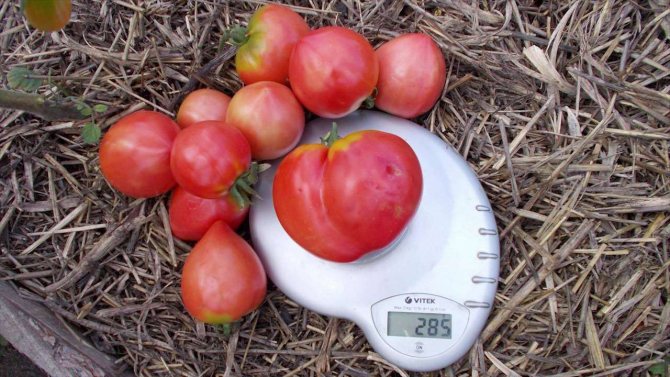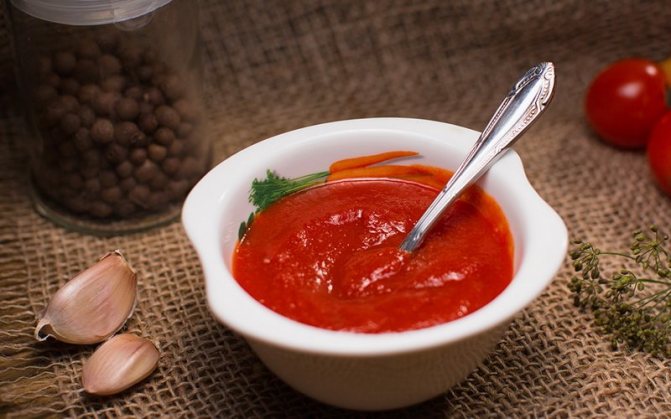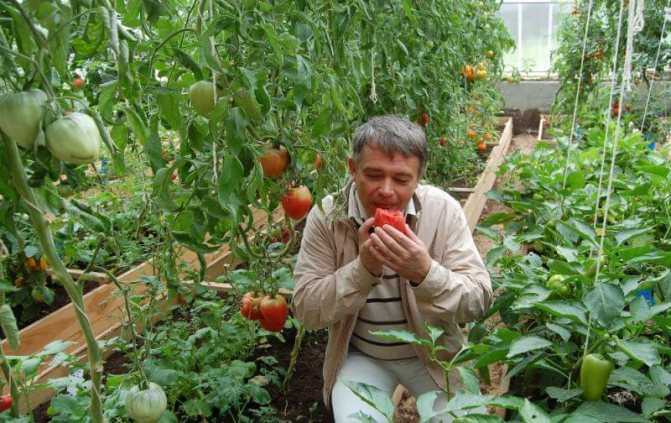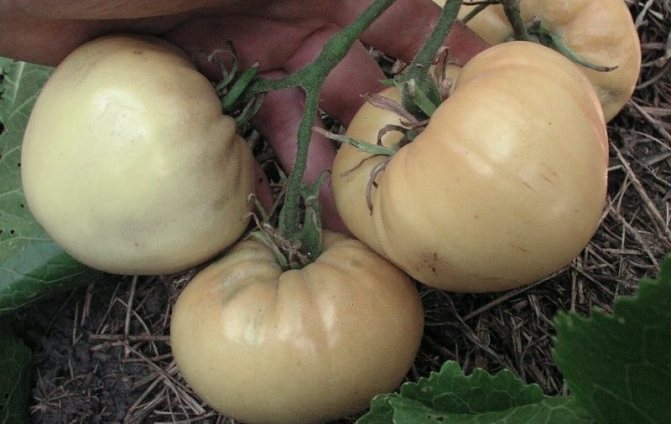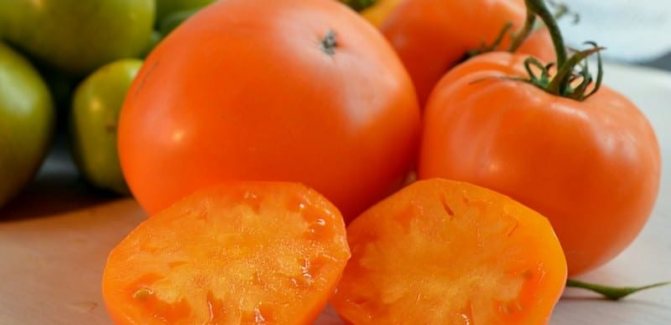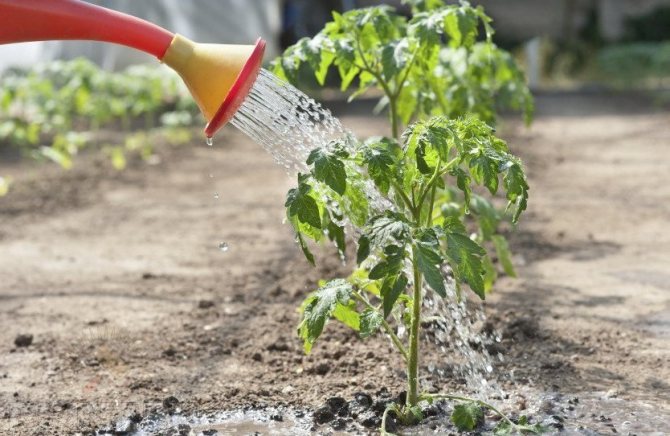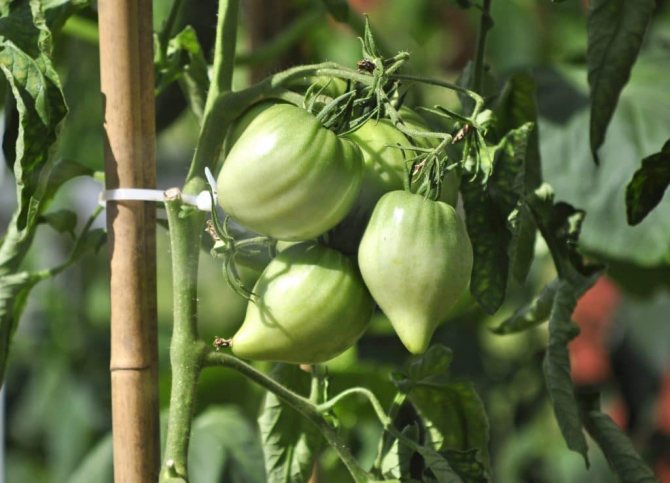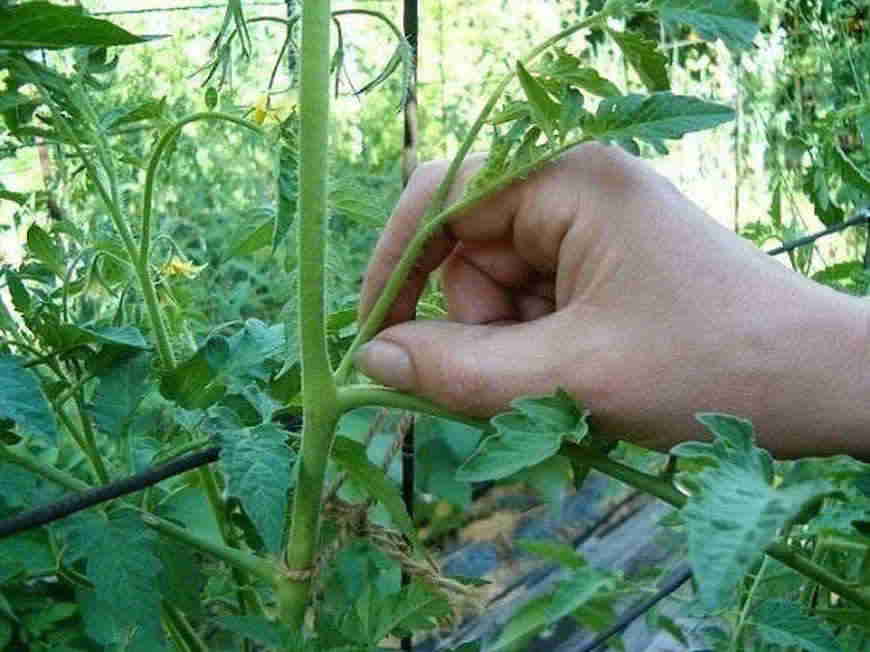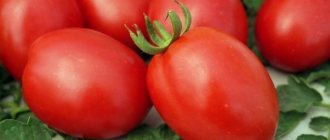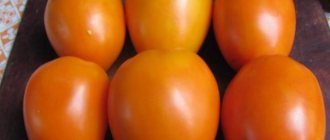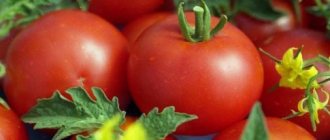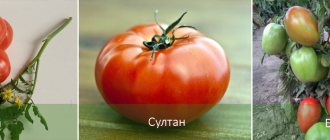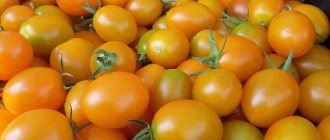»Vegetable growing» Tomatoes »Growing tomatoes Bull heart
0
183
Article rating
Bovine heart tomatoes are in demand among lovers of this vegetable. Tomatoes have been grown since the 40s. 20th century. According to one version, his homeland is the Stavropol Territory. Other sources speak of Dutch, Italian roots. The variety is listed in the State Register at the request of the agro. It is recognized as a variety bred as a result of folk selection.

Growing Tomatoes Bovine Heart
Advantages and disadvantages of the variety


Advantages of the Bull Heart variety:
- large-fruited fruits, especially on the lower brushes;
- very tender, sweet and fleshy pulp;
- there are various subspecies;
- has a high germination rate of planting material;
- the fruits are tied together;
- good yield indicators;
- can be grown both in a greenhouse and in an open field;
- drought tolerant plants;
- immunity to most diseases, in particular to late blight.
Disadvantages:
- the need for a stepson, the formation and garter of bushes;
- with improper care, it can be affected by some types of diseases.
Cooking recommendations
Large fruits of tomatoes of the described variety are not suitable for whole fruit preservation, but at the same time they are an excellent ingredient in all kinds of tomato pastes, sauces and lecho. They can be used to make excellent summer soups, salads and simply stewed vegetables as an addition to the main side dish.
Did you know? In the eastern part of Spain, in the city of Bunyol, the tomato battle ("Tomatina") is held annually, during which hundreds of kilograms of tomatoes are consumed.
The main recommendations for preparing the variety include the following nuances:
- both red and yellow tomatoes are equally good for making tomato juice;
- in order for the tomato puree to turn out to be extremely delicate and pleasant to the taste, it is advisable to remove the skin from them before processing the fruits (it is easily separated from the pulp);
- large and overripe fruits are better suited for conservation than those that are just beginning to ripen;
- orange and golden fruits look great in a salad composition, so when creating this dish it is better to choose them;
- dark red tomatoes can be used to prepare standalone tomato dishes (for example, stuffed tomatoes);
- You can pickle slightly underripe specimens, which only become sweet (although not all housewives like this cooking option).
Video: Tomato variety "Bull heart" black
Before preparing tomato dishes, do not forget about the quality of the grown crop. To create culinary masterpieces, only fresh and completely healthy fruits should be used, without the slightest signs of disease or the presence of pests.
Variety "bull heart" - a good tomato for planting in any area. The relatively low maintenance requirements and high taste make these tomatoes very valuable for any gardener.
Yield
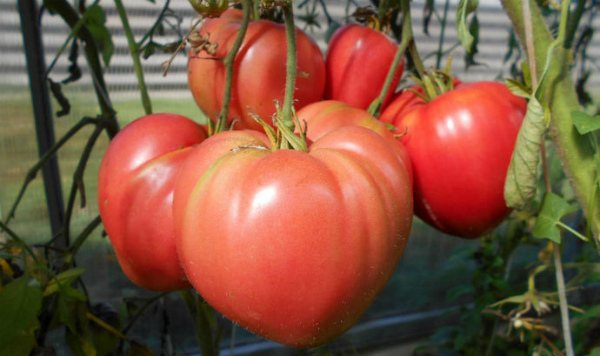

- When grown outdoors, you can harvest up to 5 kg from one bush.
- When growing tomatoes in greenhouse conditions, the yield indicator can be increased to 12 kg per bush.
Such a crop can only be harvested if you choose good seeds, and also adhere to all the rules for caring for plants of this variety.
The fruits can be harvested both at the technical stage of ripeness (greenish tomatoes) and at the biological stage (red tomatoes). But while the tomatoes are not yet ripe, it will be difficult to understand whether they have reached their size or will continue to grow.
Therefore, if there is a need to remove unripe tomatoes, then it is worth focusing on a color change. As soon as a yellow or brown tint appears, you can already pluck it.
Tomatoes ripen well on a windowsill, in a box or in a basket. It is only necessary to lay out the fruits in 1 or 2 layers.
Growing Bovine Heart Tomatoes at Home
For growing at home, the Bovine Heart tomato variety and any of the varieties derived from it are not very suitable. The main reason is the size of the plant. There is not enough room for such bushes, even on the balcony, let alone on the windowsill. Their root system is powerful, developed, in the close volume of the pot, it will not feel very good.
In addition, early ripening varieties with a ripening period of no more than 90-100 days are most often chosen for planting at home. A bull heart does not meet this criterion either.
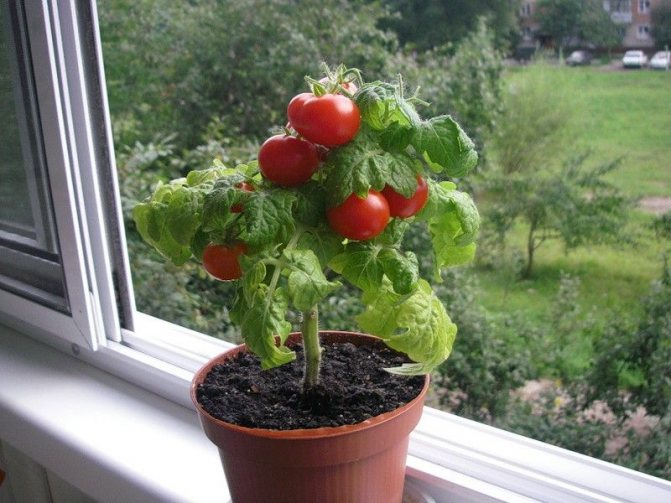

For planting on the windowsill and on the balcony, tomato varieties are chosen, whose appearance is radically different from the exterior of the Bull's Heart
Plants of this variety are difficult to provide with nutrients in the right amount. With their deficiency, the fruits simply will not ripen. But raising the dose or shortening the intervals between feedings is also not an option.
Superdeterminate tomato varieties from the ampel or standard category are ideal for the windowsill, the bush in which does not stretch more than 0.5 m in height. It is also desirable that they be small-fruited - such tomatoes ripen faster. As you can easily see, Bull's Heart is from a completely different opera.
Varieties of varieties


Golden Bull Heart
The difference between the Bovine Heart from other varieties is that the variety has several subspecies differing in color. In addition to the traditional red tomatoes (red bovine heart), there are the following varieties:
- Golden Bull heart. The fruits of this subspecies are cone-shaped and golden-yellow in color. The weight of tomatoes is 400-750 grams. The skin is firm. The taste is sweet. The yield is average, lower than that of the "red heart".
- Pink Bull Heart. The tomatoes are bright pink. Fruit weight reaches 1 kilogram. The skin is thin but firm. Maturation occurs a little later than other species. The fruits keep very well. Plants have an increased resistance to various diseases. Easy care and many advantages make this type of Bull Heart quite popular among gardeners.
- White bull heart. The fruits of this variety are colored white. The weight of a tomato can reach 800-900 grams. Bears fruit for a long time. Fruiting stops immediately after the onset of the first cold weather.
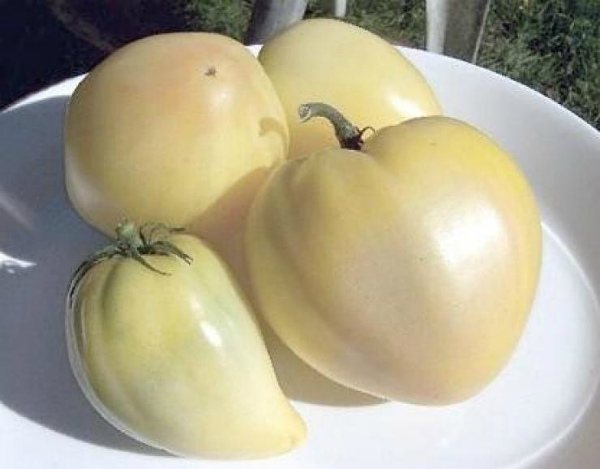

White Bull Heart - Orange Bull Heart. The fruits are orange in color. The weight of a tomato reaches 1 kilogram. The plant is resistant to dry weather and is rarely susceptible to disease. Requires very frequent pinching.
- Black Bull Heart. The fruits are burgundy brown. Fruit weight is about 600-700 grams, but ripening is very long. They have tender pulp, which contains almost no seeds. The variety stands out for its good yield. Often the fruits ripen at the same time on all hands.
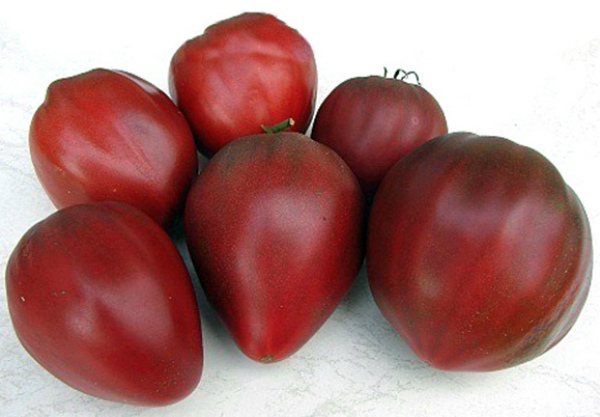

Black Bull Heart
Existing subspecies
Bovine heart is an old variety, very popular and beloved by most summer residents. Due to the great interest in the variety, many of its subspecies have appeared with fruits of different colors and stems of different heights. All subspecies are united by the heart-shaped form of the fruit, increased fleshiness and large-fruited. In the trading network, there are low-growing tomatoes with fleshy heart-shaped fruits and a stem height of no more than 1 meter:
- budenovka,
- pink honey,
- supermodel,
- loving heart is red,
- Estonian,
- pink helmet and others.
Cuore Di Bue (Bull's Heart), one of the most famous Mediterranean varieties in the world, has an attractive heart-shaped shape with strongly pronounced ribs. It is now very popular in the markets. This is a tall plant with very sweet tomatoes weighing up to 400 grams. Designed for growing in greenhouses.
The fleshy and sweet Riviera tomatoes look like an elongated beef heart, but this variety is taller and its fruits are smaller (about 80 g).
Features of growing and care
The variety has a long growing season, so it is recommended to grow it only through seedlings. The optimal age for planting tomatoes in a permanent place of growth is 50-70 days.
- Before planting, the seeds must be scalded with boiling water to kill all the fungi on their surface. It is also recommended to disinfect the soil by spilling it with boiling water.
- Seeds are sown in the prepared soil to a depth of no more than 2 cm. The distance between the seeds is at least 1.5-2 cm. The plantings are covered with foil and taken out to a dark, warm place.
- When the sprouts hatch, the film is removed, and the containers are transferred to a windowsill or under a fluorescent lamp.
- In the phase of 2-3 leaves, the seedlings are dived into separate containers. Seedlings are fed once every 14 days. Complex fertilizers are used for tomato seedlings.
- 7-10 days before disembarking to a permanent place, the seedlings are hardened, that is, they are taken out into fresh air. First, for 1–2 hours, and then the time is increased to a whole day.
Greenhouse landing
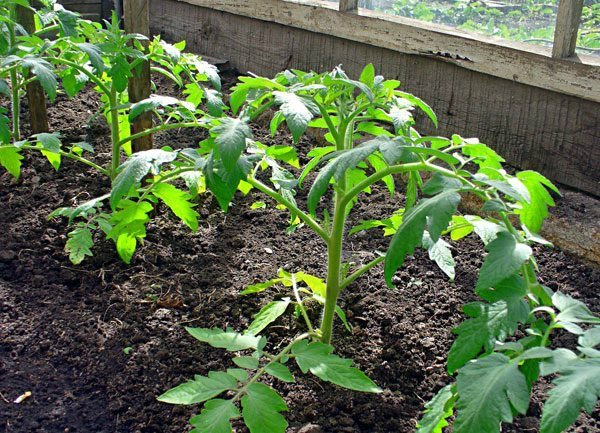

When the seedlings grow to 20-25 cm in height, they must be transplanted into a greenhouse. As a rule, this is done in mid-April. The greenhouse must be well heated and well lit.
Seedlings are planted at a distance of one meter from each other. I make holes 15 cm deep and add humus. After planting, the plants are well watered with warm water.
Greenhouse care
The air temperature in the greenhouse is maintained at 20-22 ° C during the day and 16-18 ° C at night. Water the plants once every 7 days. For 1 sq. meter uses about 7 liters of water. During the period of fruit formation, the amount of water is increased to 15 liters per 1 sq. meter.
The greenhouse is ventilated every day for 30 minutes. Tomatoes are manually pollinated. The bush must be formed and removed by stepchildren. Organic fertilizers are applied every two weeks.
Growing tomatoes in the open field
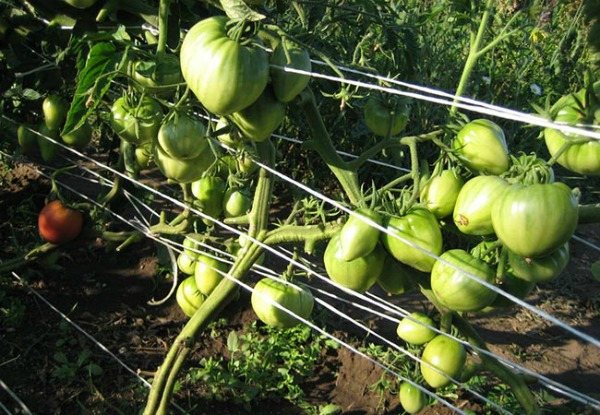

The garden bed has been prepared since autumn. All weeds are removed, rotted manure is added, and the soil is well dug up. Seedlings are planted in early May.
Care
Plants are fed 2 weeks after planting with organic fertilizers.
- After the first top dressing, a layer of mulch no more than 5 cm thick is poured onto the ground. Pine needles, sawdust or straw are used.
- The second time the plants are fed ten days after the appearance of the first ovaries. 2 liters of manure solution are poured under one tomato bush.
- The third time the plants are fed during the ripening period. Pour 2.5 liters of manure solution under each tomato bush.
Plants are watered strictly at the root, twice a week. If the weather is hot, 3-4 times a week. Also, the bushes are formed, tied to the trellis and cut off by the stepsons.
Diseases: prevention
The main threat to tomatoes is late blight. In order to prevent the disease during the growing season of plants, the bushes are treated twice with fungicides. Water the "Bull's Heart" tomatoes directly under the root, preventing moisture from getting on the leaves.
For the same purpose, the greenhouse is regularly ventilated in order to prevent the appearance of moisture concentrate on the walls of the shelter. At the first signs of a disease on the bush, remove all affected leaves and fruits. They are taken out of the territory of the site and burned.
Reviews of gardeners who planted the variety
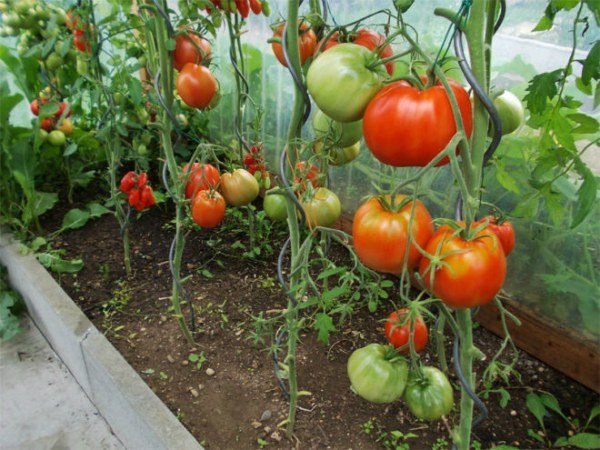

Angelina
I liked the variety very much - fruitful, does not get sick, tasty fruits.Mid-season, tall, ind. grade. Ties fruits under unfavorable conditions, does not shed the ovaries. When a plant is formed in one stem, there can be giants fruits. The taste is excellent, sweet, sugary.
Lana_s_Kavkaza, Pyatigorsk
Large bull heart from Sivukha. I liked the variety, all the fruits are large, heart-shaped, the pulp is dense, fleshy. Mid-season, high, 1.6-1.8 m in the MZ. Sufficiently large fruits, rich, balanced taste.
Fairy
I had it from the Russian Garden, in 2020 I planted it. The shape was not heart-shaped, but otherwise it was good! Large-fruited, tasty, fleshy. Despite the thin skin, he lay down and was eaten in the last rows.
Ninulia, southeast of the Nizhny Novgorod region
I liked the variety very much. The tomatoes were large and delicious! And they did not hurt the harvest!

